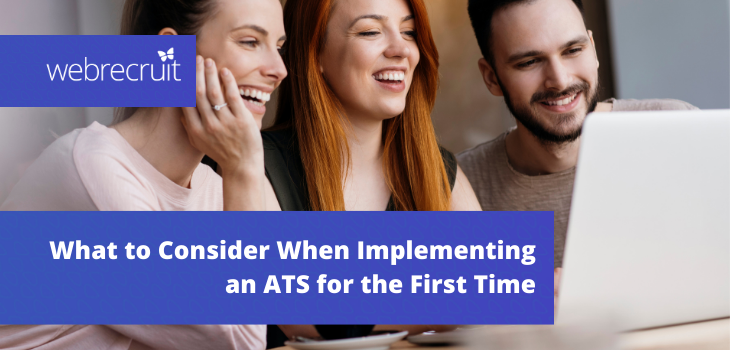Implementing an Applicant Tracking System (ATS) for the first time is an exciting occasion, especially if you’ve spent years using error-prone, admin heavy recruitment management methods, such as spreadsheets and emails.
However, although you’re likely to want to get started on your search for the perfect ATS as soon as possible, there are a number of things you should consider and plan first.
If you’re implementing an Applicant Tracking System for the first time, you should consider the following:
1. What functionality do you need?
There’s a huge amount of choice when it comes navigating the recruitment software market and it can be easy to get overwhelmed. Your options range from simple shortlist managers to full blown enterprise-level recruitment systems (and everything in between!)
Consider the core features you need your ATS to have and how configurable you need it to be before starting to draw up a shortlist of potential suppliers.
Read more: How to Navigate the Recruitment Software Market
2. What timescales are you working to?
How quickly do you need your software to be live?
Applicant tracking systems vary in their implementation time. Some web-based offerings can be set up within minutes, whereas other application-based installations can take months to roll out so it’s important to consider this in your plans.
You should also factor in the time it takes to train your team within your plans. Some software can be picked up quickly with minimal training and some ATSs can take weeks of training for your users to get up to speed with. If you’re looking to increase your team’s speed to competency, opt for software that’s intuitive, user-friendly and backed up by high quality support.
3. Who will be using it?
How many people will be regularly using your ATS? Don’t just think about your HR team but also consider your hiring managers.
Some software vendors charge per user so this is worth bearing in mind if you have a sizeable HR team and/or an large number of hiring managers. It’s also important to consider the technical ability of your team and how much training they are likely to need.
4. What’s your budget?
Pricing structures vary for ATSs. Some software providers charge per user, some charge per job and some just charge an annual or monthly licence fee. It’s important to shop around and make sure your chosen supplier’s pricing structure works best for your business.
For example, if you know that you’re likely to recruit for a high number of vacancies over the next year, a ‘pay per job’ pricing structure probably won’t make the most financial sense.
You should also check if there are any hidden costs. For example, are there additional configuration fees or will you be charged for training or additional users?
5. How will you roll out the software internally?
Having a concrete plan in place is key to the successful rollout of any new piece of technology. Consider your training schedule, as well as any extra stakeholders you’ll need to get involved in the process; for example, will your Marketing Team need involvement if you’re setting up a new careers site? Will your IT Team need to get involved to assist with any integrations?
Make sure all stakeholders are aware of the timescales for implementation and are kept updated with any hold-ups in the process.
If you’re switching ATS providers…
Of course, the above is also still relevant if you’re already using an ATS and simply switching to a new supplier. While the premise of Applicant Tracking Systems are all the same, the spectrum of software available on the market can vary so much in terms of functionality, cost, interface and ease of use, so training is still important.
You’ll also need to consider the transfer of data from your existing software to your new ATS. Make sure that the process for this is discussed and mapped out before signing the contract with your new supplier.
Want to learn more about Applicant Tracking Systems? Download Webrecruit’s free Pocket Guide.






